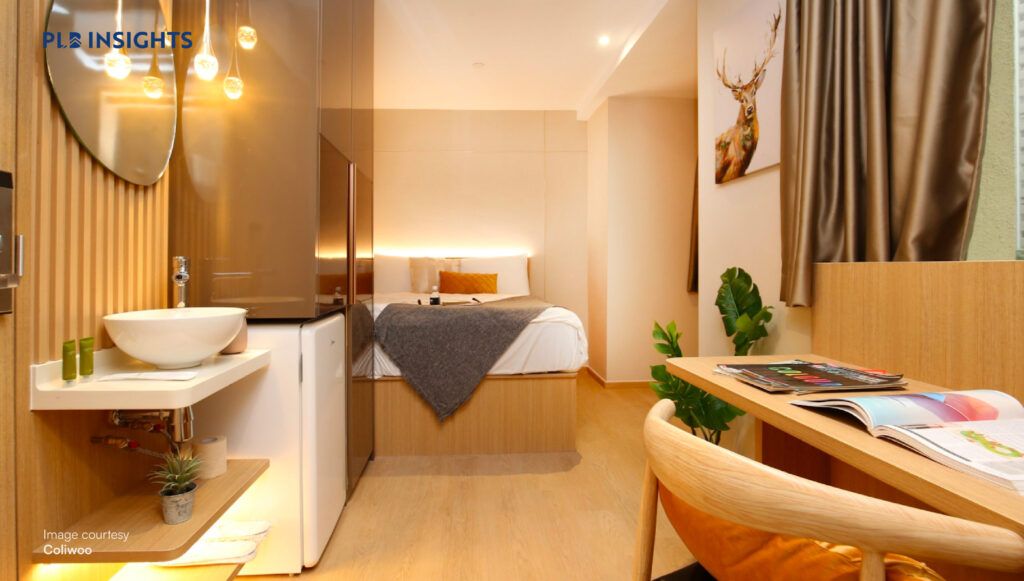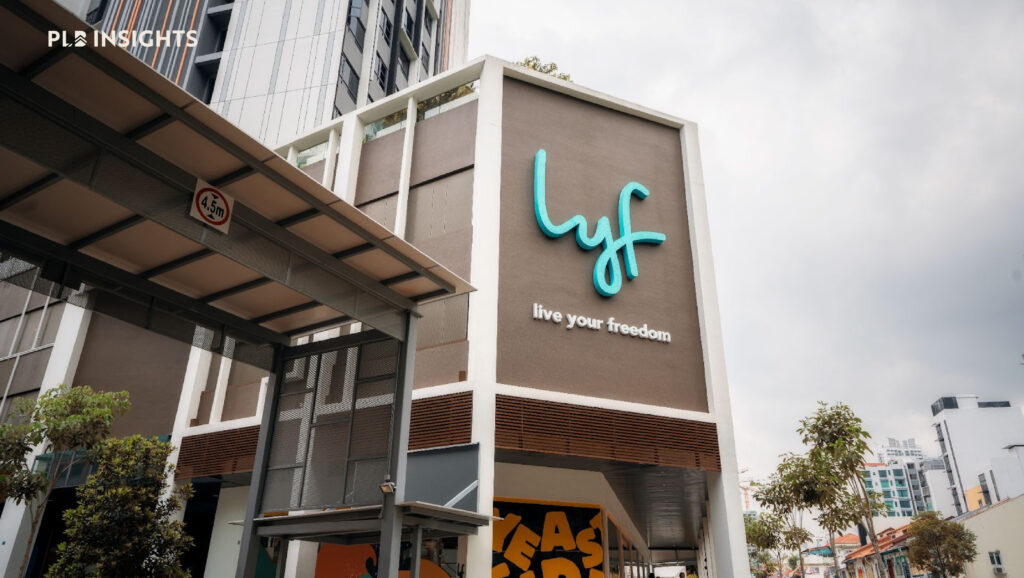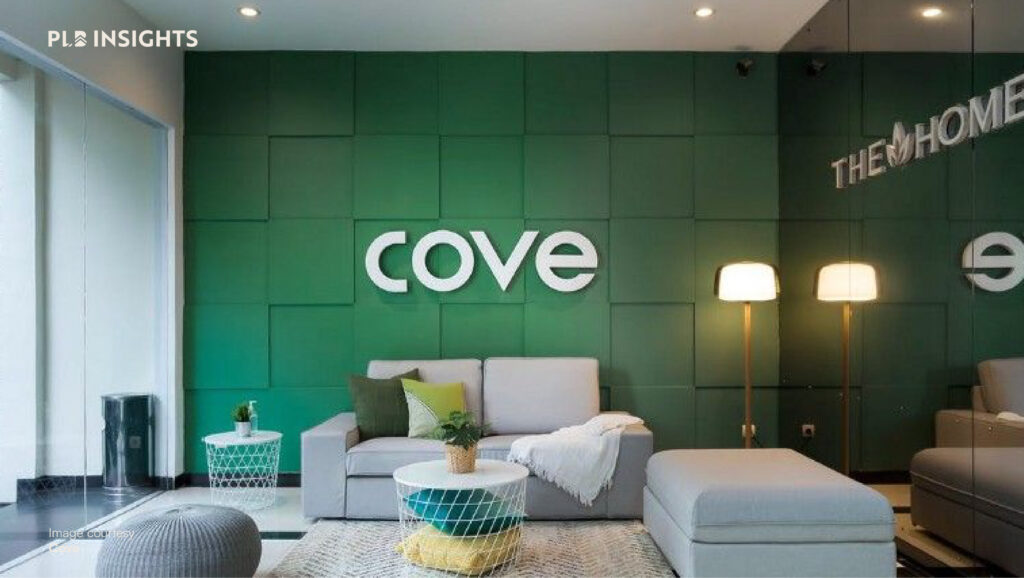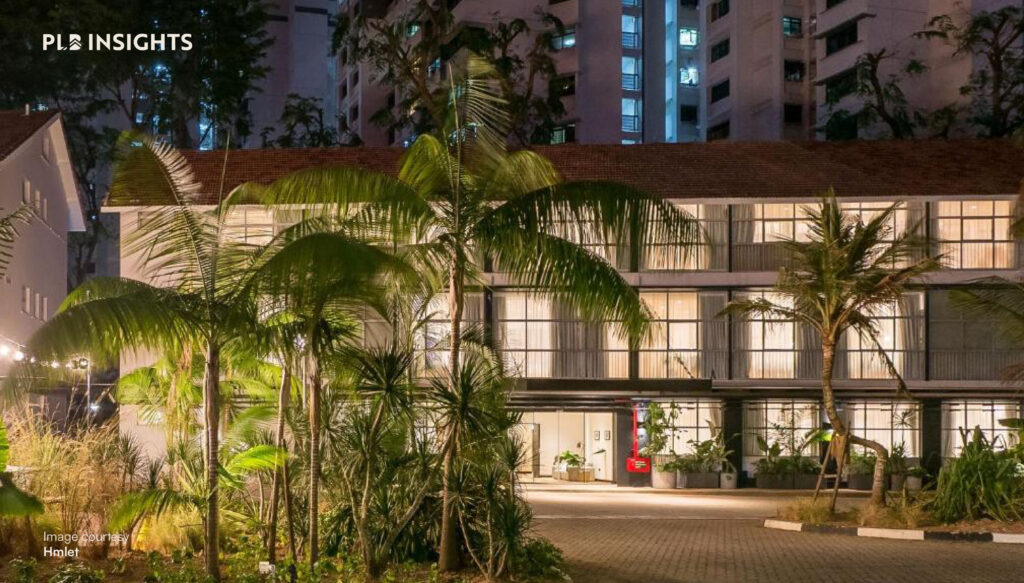
As the cost of living in Singapore continues to rise, the concept of co-living is gaining more traction among millennials and young professionals opting for affordable housing options. Co-living spaces offer a number of benefits for both foreigners and locals in the search for a place to stay. However, there are also potential challenges that may arise with this living arrangement that you must consider before making your choice.
In this article, we examine the advantages and disadvantages of co-living spaces. Moreover, we explore a few different co-living locations in Singapore and go over factors that can help you determine whether this is the ideal housing option for you.
The Rise of Co-living Spaces

There has been a growing trend of singles opting to rent their first home rather than purchase as housing costs have been increasing. With this, another trend has slowly gained popularity–co-living.
A co-living space is a type of housing arrangement where individuals rent private bedrooms within a development with shared common areas and amenities such as a kitchen, living room and in some cases, bathrooms.
Factors that have contributed to the rise in popularity of this housing option include the increase in property prices and rental rates, a shift in societal attitudes towards more flexible housing options, as well as changes that have come about post-pandemic. After a long period of circuit breakers and restrictions, people now crave connectivity and to focus on wellness. Additionally, as remote work and hybrid working conditions have become increasingly normalised, young individuals value a space that can offer room for rest and work.
Let’s go over some of the pros and cons of living in a co-living space.

Advantages
Affordability
The first advantage of a co-living space is affordability. As you are renting a room instead of an entire apartment or condo, rent is typically cheaper. Moreover, the monthly rent amount includes utilities, Wi-Fi, and some maintenance fees, so that is not an extra amount of money you need to keep aside from your rent.
However take note that rent for different types and sizes of rooms can vary, with some options being priced on the higher side.
Flexible Rental Contracts
As compared to renting condominiums or apartments where leases have to be a minimum of six months, co-living spaces often offer flexible rental terms. Residents can rent on a monthly basis or for shorter periods of time. Depending on the provider you choose in Singapore, lease terms can be as short as 6 days in some places and 3 months in some.
This can be beneficial for individuals who do not want to rent for six months or more or are unable to due to their studies, work, or travel.
Convenience
Another advantage of co-living spaces is the convenience they offer that goes beyond just affordability and flexible lease terms. Firstly, co-living spaces are often fully furnished and equipped with the necessary amenities in the bedrooms, kitchen, living room and other communal areas. Additionally, co-living spaces typically come with air conditioning, TV, and high-speed internet.
This eliminates the need for tenants to purchase furniture, utensils, and kitchen appliances before moving in, making their moving process much more convenient and hassle-free.
Moreover, co-living spaces typically provide housekeeping and cleaning services that are included in the rent. These services that are provided may include vacuuming, mopping, changing bed sheets, cleaning surfaces, tidying the kitchen, washing toilets and so much more. This ensures that residents have a clean living space that meets professional hygiene standards.
Additional amenities that residents of co-living spaces may have access to include fitness centres, pools, and gardens.
Sense of Community
Sharing a co-living space with different individuals allows you to create a sense of community away from home. Living with people from different backgrounds and walks of life can allow residents to network and meet like-minded people who share their interests and hobbies. Oftentimes, co-living facilities also host different events and activities such as yoga classes, cooking classes, movie nights, and talks and presentations for residents to participate in.
This can be a great opportunity to make new friends and create a sense of belonging, especially for newcomers and expats who want to expand their social circle in a new city.

Drawbacks
Lack of Privacy
One of the most significant disadvantages of co-living spaces is the lack of privacy tenants have. Aside from a private bedroom, all amenities and living spaces such as the kitchen, bathrooms, and living rooms are shared among all the residents in the development. And in some cases, some co-living spaces offer shower spaces as a shared facility instead of an attached bathroom to the rented room. This can result in a lower sense of privacy and personal space.
Conflict
Living with people who have different lifestyles, habits, schedules, and hygiene standards can sometimes lead to disagreements and conflict. These differences can bring up issues such as noise disturbances, communication breakdowns, and the use and distribution of any shared resources in communal spaces. Moreover, people with different personalities may have compatibility issues and will need to find a middle ground to keep the peace within the residence.
Safety & Security Concerns
Taking into consideration a few concerns, safety and security can be a potential disadvantage of staying in a co-living space. Individuals often live with people they do not know well and have no prior connection to in co-living spaces even though providers may conduct background checks before accepting new residents. As such, there is still a level of uncertainty and risk that comes with living with strangers and having to share communal areas with them.
Limited Storage Space & Personalisation
Co-living spaces may have limited storage, making it challenging for residents to keep all of their belongings. For residents who have larger items that require additional space, this could be a disadvantage. Moreover, they may have to find other storage solutions like self-storage units.
One of the benefits of co-living spaces is the fact that they are often pre-furnished. This helps individuals save costs when it comes to purchasing essential pieces. However, it also comes with a downside as this means that residents are unable to personalise their living space according to their own tastes and preferences.
Co-living Spaces in Singapore
Lyf By Ascott Properties

Lyf by Ascott Properties is a co-living space that is catered to digital nomads, travellers, and creatives searching for short-term and budget-friendly housing options. Unlike many other co-living spaces in Singapore, lyf offers rental terms that start at as little as one night.
Lyf has a wide range of room types ranging from studios to four bedrooms, bunk spaces and six-bedroom duplex spaces. Moreover, this co-living space comes with 24/7 security surveillance, high-speed Wi-Fi, mobile key access and the option of private kitchens and bathrooms. Some locations, such as the lyf One North also come with an infinity pool and a fitness centre. Check out an article we previously shared on lyf Farrer Park.
Cove

With over 100 locations across Singapore, Cove offers residents a wide range of options to choose from including condos, landed houses, and apartment blocks at different prices. Moreover, these housing options come with weekly housekeeping services, regular maintenance and high-speed internet. Residents also have a range of flexible lease durations to choose from, with the minimum stay period starting at 3 months.
As Cove is targeted at younger clients, it has a business model that was developed to make the entire process of finding a place to stay and moving in as smooth as possible through the use of technology. Clients can manage all of their needs and concerns on the Cove app, including uploading important documents, accessing monthly invoices, connecting with flatmates and reporting any issues that arise (Wi-Fi connectivity, air conditioning, faulty light bulbs, etc.).
Hmlet/Habyt

Hmlet, now also known as Habyt, is a unique co-living space located at Outram Park and Tanjong Pagar. This co-living space has rooms of different sizes with the option of a private bathroom or shared bathroom.
Apart from the rooms and basic amenities such as a communal kitchen, workspaces, and washing machine and dryers, Habyt also offers a wide range of additional facilities that residents can enjoy. These include an outdoor deck and garden, plunge pool, pet-friendly spaces, a wellness studio, a lounge with complimentary coffee and tea, on-site parking and transport services.
Is this the right choice for you?
The decision to choose co-living spaces for your accommodation ultimately depends on your lifestyle, personal preferences and needs, and your budget.
Co-living can be ideal for you if you are on a budget, a student, a traveller, or an individual renting a place on your own for the first time. This housing option can be a great way to make the transition towards living on your own, away from home for the first time. It is good for people that want short-term rental accommodation with flexible rental terms. Moreover, it is also suitable for individuals who value communal living, do not mind sharing spaces with others, and enjoy social interaction and expanding their circle.

However, if you are someone who values privacy and personal space, and aren’t very big on sharing your kitchen and bathroom with roommates, there are other housing options that may be better suited to your needs and preferences. Singapore has a number of different housing options, both public and private, that offer a range of amenities and facilities.
Closing Thoughts
Co-living spaces have seen a rise in popularity in Singapore as living costs have seen an increase, consumer preferences are changing, and as co-living providers are popularising the concept of shared accommodation.
Choosing co-living requires individuals to consider the various advantages and disadvantages that come with living in an accommodation where so many aspects of one’s life become shared. It is also essential to evaluate factors such as budget constraints, flexibility needs, safety and security concerns before making a decision that is ideal for you.
We hope you have gained some essential insights on the pros and cons of co-living spaces in this article. If you are on your real estate journey and have any questions or concerns, feel free to contact us here.
And as always, see you in the next one!







